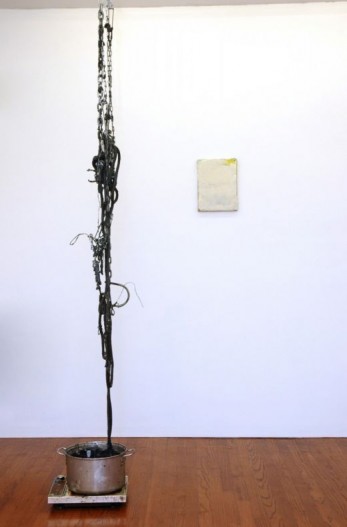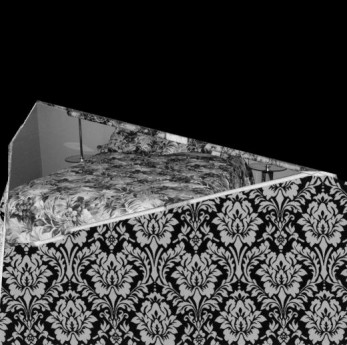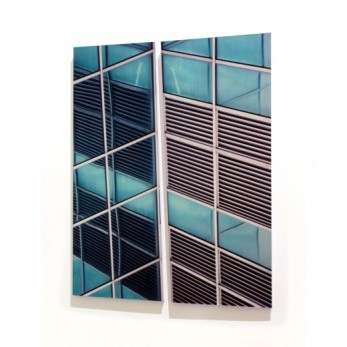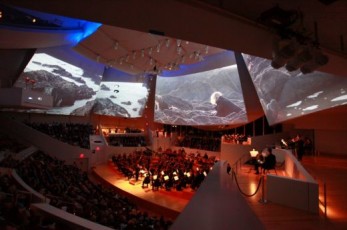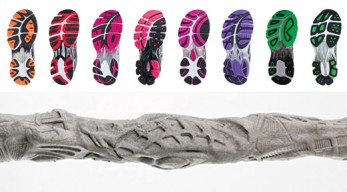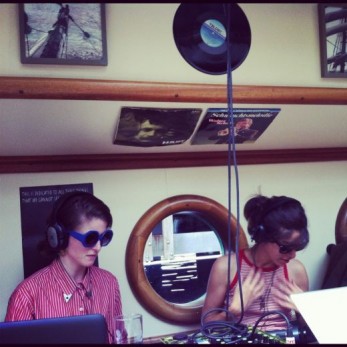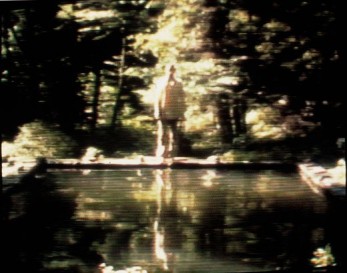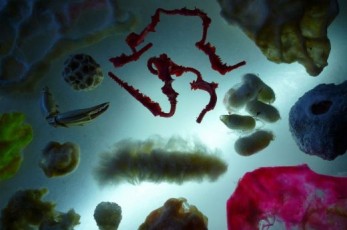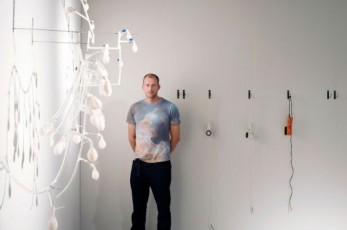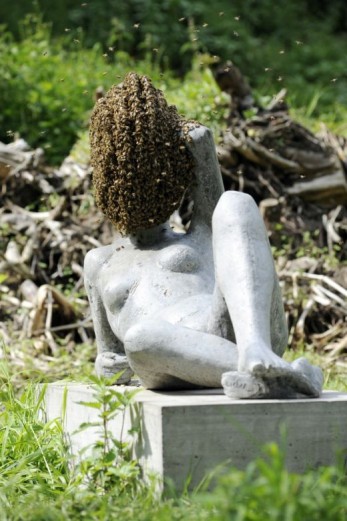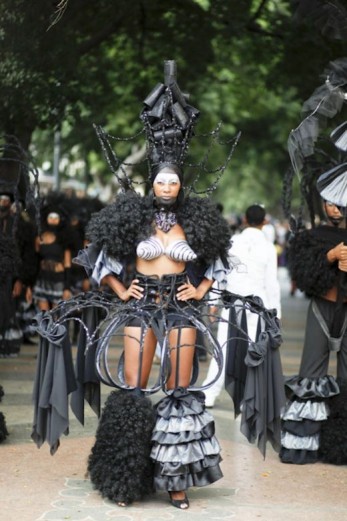The orchestra is not formally dressed, but in jeans. People mill about; the audience is gone. The scene is most likely not even that of a rehearsal, but of a class in session. This reflects New World itself, as a symphony and an orchestral academy in one, and a very public place.
Feelings is the fourth exhibition at the Michael Jon Gallery, a small space in the Design District run by recent Chicago transplant Michael Radziewicz. Consisting of three emerging LA artists, the exhibition shares variations of conceptual and aesthetic ties rooted in the appropriation techniques of the Pictures Generation among others, and an interest in materiality.
Quiet and deadpan, Sparks’s photographic collages/assemblages, sculptural installations and first-ever animation are fixated on the etymological origins and contemporary application of extraction. Though elements of the pieces felt precious, whether by craft or by pattern, together they coolly examined how interior space and décor are often viewed as functions of gender and form.
Printing (and, in one case, projecting) digital images of building façades on the reflective acrylic surfaces of variously shaped, smallish geometric wood objects, Carlisle installed these in the gallery space, where they perched nervously, tenuously—folded in the seam between two walls, as if poured down the side of a white wooden table, fluttering jaggedly at eye-level.
Full disclosure number one: I’ve been a Frank Gehry groupie from the day I called Vogue to request a full page for a house that a young architect had built himself in Santa Monica. “Spelled G-e-a-r-e-y?” my editor asked, and the request was denied. (I wrote it up some months later for British Vogue.)
If all the strawberries in the world made up only 100 strawberries, then each of those strawberries would weigh 44,092.452 U.S. tons.
Given that the total world production of strawberries for one year is around 4,409,245.243 U.S. tons.
And the average weight of a single strawberry is 2.59 x 10-5 U.S. tons.
So each of the 100 big strawberries would be the equivalent of 1.70 x 1011 average strawberries.
Trapped in these mutable surfaces are the traces left behind by an imaginary track meet that has taken place in another domain. We are prompted to question the manifestation of the ergonomic trace in daily life.
The four artists discussed here who navigate within this port of call have unique approaches to addressing cultural logistics. This is visualized in several contexts including boating, illegal radio, the gray areas of global capitalism, and the relationship between fetish objects of vastly different cultures.
“But first, we must relearn how to read an image, not in the commercial way, but in the human way, and only then we can put it to good use. Much of the task for the practicing artist today in the creation of his or her work has far less to do with theory or technology, than it does with simply keeping the rational, deductive, self-conscious, reasoning processes at bay in the mind.”
On the occasion of the upcoming exhibition, UNNATURAL, on view at the Bass Museum of Art, curator Tami Katz-Freiman spoke to the Miami Rail about the power of artificiality, the unnatural qualities of nature, and why Miami is the perfect place to think about the dissolvable edge between the human-made and the naturally-generated.
The six foot five inch tall designer from Hackney, England has developed a reputation for engineering structures that demonstrate complex phenomena through simple gestures, choreographing moments for his viewers to see what is otherwise invisible.
Ours is a period of dislocation. Not of absence, not of presence, but a period of time characterized by the dull sucking thwohk of a ball joint being pulled from its socket. It is in the vacant space that trauma has opened up that we can function. We are in excruciating pain, sure, but the dislocating moment is one of supreme flexibility.
I think it is good idea to understand the current Havana Biennial according to cold war jargon. Our paranoid society, with the public sphere almost under complete control by an ever-diversified surveillance system, is a direct consequence of the Cold War and all its infinite gadgets. So maybe art has the ability to explain why, if ideology is dead, all of its byproducts are still very alive.
Riding high on the endless potentiality of beloved book communities, I am ushered into the rare book room. It is a sparkling treasury of retinal stimulation. Standing in the midst of the collection is overwhelming. The books sit in temperature-controlled glass cabinets, a full rainbow spectrum of discoloring aged leather.


